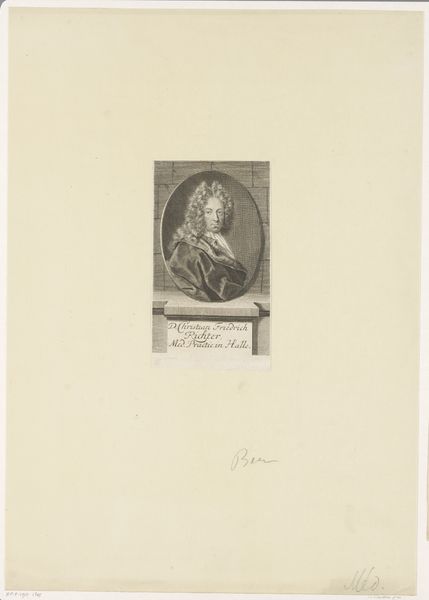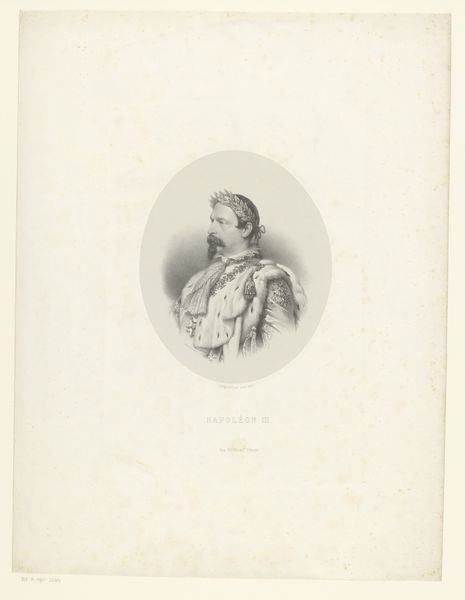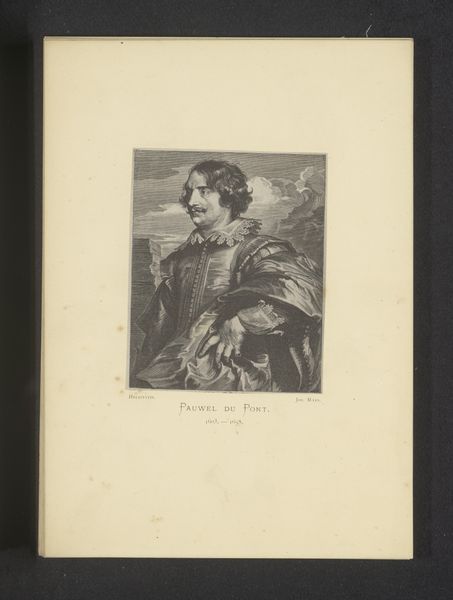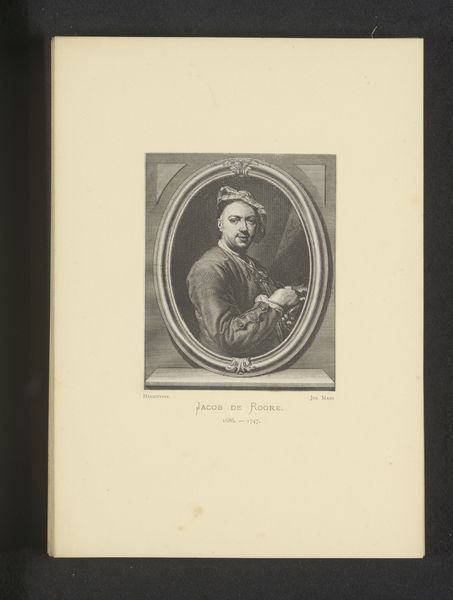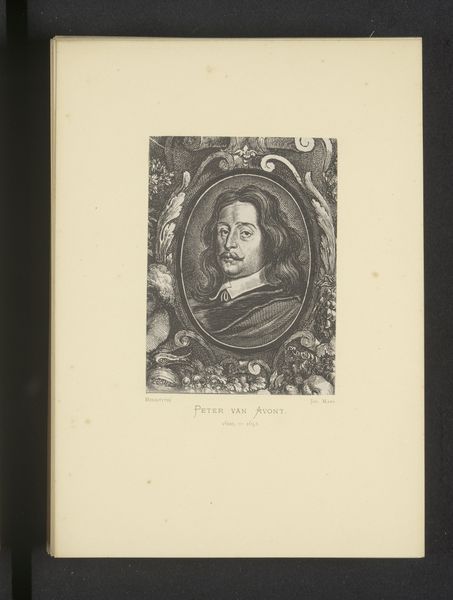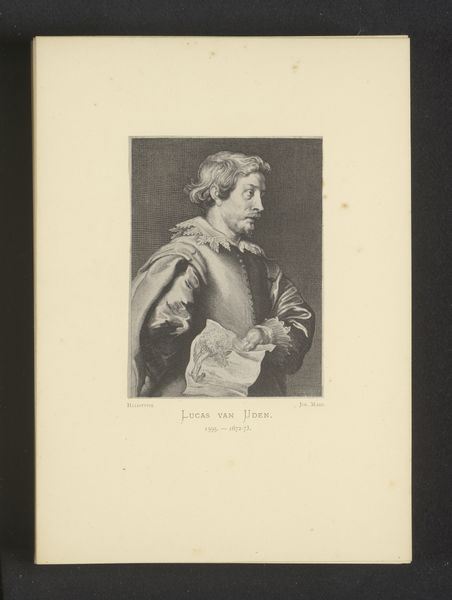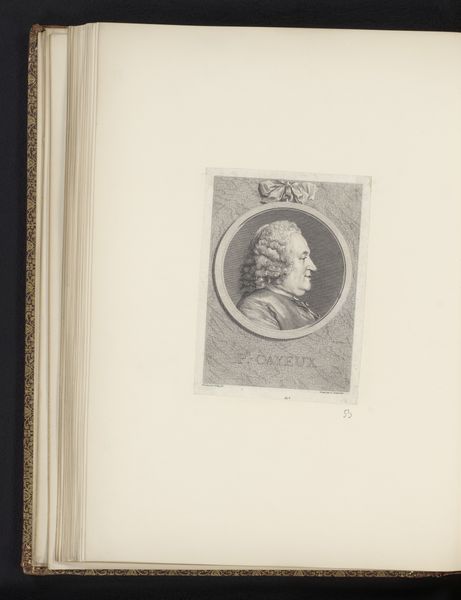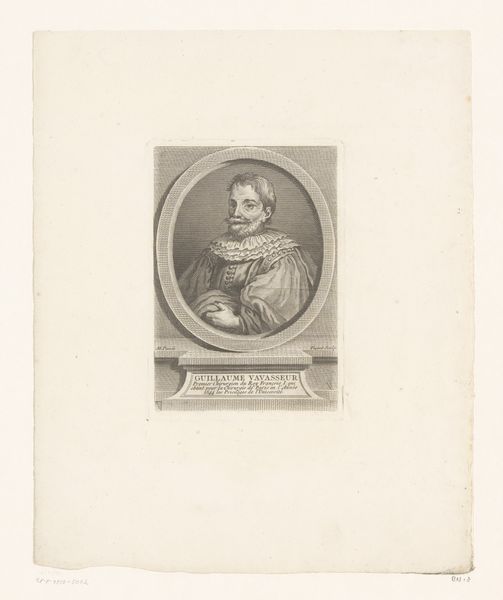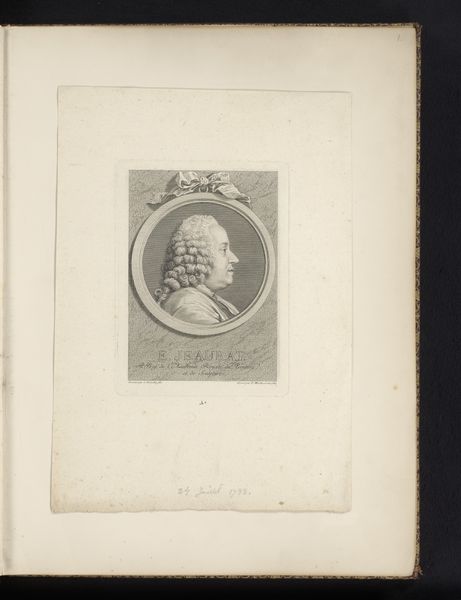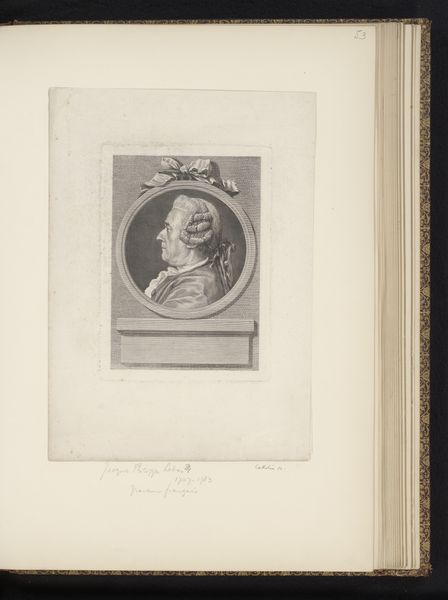
Reproductie van een gravure van een portret van Anthony van Dyck door Albertus Clouwet before 1877
0:00
0:00
Dimensions: height 115 mm, width 90 mm
Copyright: Rijks Museum: Open Domain
Editor: Here we have a reproduction of a portrait of Anthony van Dyck by Albertus Clouwet, created before 1877, using engraving techniques. The detail is striking! What can you tell me about this image? Curator: Considering the material process, think about intaglio. Each line, etched then inked, demanded a collaboration of skill and resources. Engraving wasn’t merely replication, but a reinterpretation through labor. Consider how the distribution of these prints broadened Van Dyck’s reach but also commodified his image, integrating it into a developing visual culture. How might the social status of both Van Dyck and Clouwet impacted this circulation? Editor: I guess Van Dyck's fame would definitely increase the value and reach of Clouwet's prints. But was it considered "lesser" work compared to painting? Curator: That's precisely it! Traditional hierarchies placed painting above printmaking. But here, engraving democratizes art, making it accessible. The materiality shifts from unique painting to a reproducible image. Reflect on how this reproduction serves as a crucial link in disseminating artistic ideas and influencing taste across broader segments of society. Consider also what kind of paper, ink and press would have been available for Clouwet to realize this work, and what class of person it would have appealed to. Editor: So, the value lies not just in the artistic skill, but also in its impact on how art was shared and consumed. Thank you; it certainly gives a fresh perspective on printmaking and its role in culture. Curator: Exactly! It is a potent intersection of technique, artistic recognition and expanding markets that has had lasting effects.
Comments
No comments
Be the first to comment and join the conversation on the ultimate creative platform.



